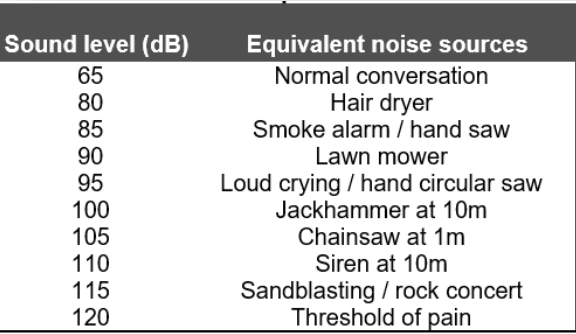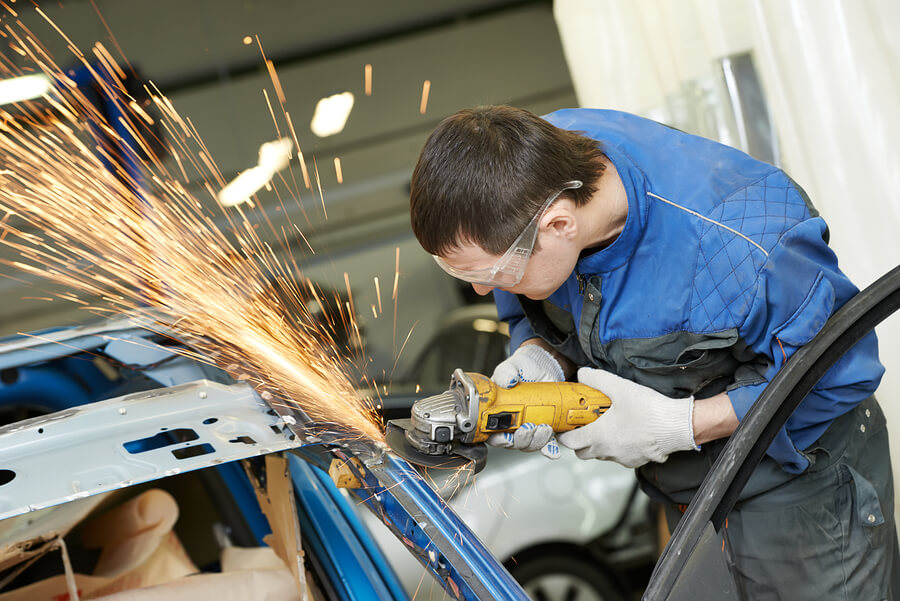Noise induced hearing loss in Australian workplaces represents a serious, but avoidable health issue.
Between July 2002 and June 2007 there were about 16,500 successful workers’ compensation claims for industrial deafness involving permanent impairment due to noise. Between 2007-08, it amounted to $41 million in workers’ compensation payments and had an estimated total economic cost of around $240 million (Safe Work Australia 2009). This has had a negative impact on Australian businesses.
What is noise?
- Noise in an occupational setting is regarded as unwanted or damaging sound.
- Noise is measured in decibels. A decibel dB, is a unit of measure that indicates how loud a sound is.
- In refinish and smash repairs, employees may be exposed to noise whilst undertaking routine tasks such as grinding, sanding, spraying and hammering.
- As a general rule of thumb, if you need to raise your voice to talk with someone an arm’s length away, the noise level may be over the exposure standards.
So what do you have to do as a business owner under the current legislation?
- The specific wording in different jurisdictions across Australia vary. However, the goal is the same – ensure employees are not exposed to noise above the exposure standards. If they are, you need to do something about it.
- The exposure standards are 85 decibels 85dB(A) over an 8-hour shift or a peak noise level of 140decibels 140dB(C) at any time. Table 1 outlines some common noise sources and their sound levels.
- You must ensure that your workers are not exposed to noise above the exposure standards.
- If you have employees that are required to use hearing protection, you must arrange for hearing tests, otherwise known as audiometric tests. Testing must be conducted within 3 months of the worker commencing the work; and at least every two years.
(1) Occupational noise-induced hearing loss in Australia: Overcoming barriers to effective noise control and hearing loss prevention, 2010.

Hearing damage and overexposure
- Hearing damage is painless (unless exposed to high noise levels e.g. explosion) and invisible.
- Damage to the hearing system generally occurs over an extended period of time and affects your ability to understand conversations.
- Signs you have been overexposed to harmful noise levels include developing a buzzing/ringing sound in your ears. Another sign may be if you don’t hear as well as you normally would until several hours after you have left the noise location.
- A number of common industrial chemicals, such as Toluene and Xylene found in solvents and solvent based coatings, can also cause hearing loss themselves or intensify the effects of noise. These chemicals are referred to as ototoxic.
- Hearing damage cannot be reversed!
What can l do to minimise exposure to noise?
There are numerous ways to control the risk of noise exposure, including but not limited to:
- Having your workplace assessed to identify noise levels and employee exposure, as well as ototoxic chemical exposure;
- Ensuring that all employees working with ototoxic substances and in areas where harmful noise levels exist, understand the risks and controls;
- Isolating workers from noise sources where possible;
- Training your employees in the proper use, limitations and care of personal protective equipment, such as ear plugs;
- Ensure your employees’ hearing has been tested in accordance with state legislation.
There are a number of free and extremely useful publications which outline how you can minimise the risk to your employees and your business. These publications are a great place to start.
(2) National Hazard Exposure Worker Surveillance – Noise exposure and the provision of noise control measures in Australian workplaces, 2009.
(3) https://www.commerce.wa.gov.au/worksafe/ototoxic-chemicals-chemicals-result-hearing-loss, 2016.
The material in this article is intended to provide you with general education and information to increase overall health & safety awareness. It is not intended to cover all aspects of relevant legislation or your specific obligations, and should not be taken as legal or other expert advice or services. You should contact Total Safety Consulting for professional advice or services. No responsibility is accepted for any actions taken by readers of the above material which results in any liability, loss, injury or risk.
